Categories
Latest Updates
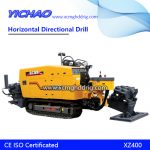
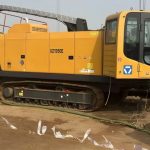
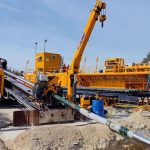
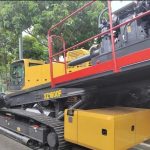
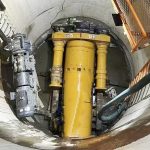
The mud pump is a reciprocating plunger pump, which converts the rotation of the motor into the reciprocating linear movement of the crosshead and the piston through the crank connecting rod mechanism, and compresses the low-pressure mud into high-pressure mud. During the construction of directional drilling, the high-viscosity, high-density and high-sand-content mud is conveyed into the cave at high pressure to cool the drill bit, wash the hole wall, break the rock, and carry out cuttings when returning from the cave. It is directional One of the most important equipment for drilling construction.
The working process of the mud pump is divided into two steps: suction process and discharge process.
Traditionally, we divide the mud pump into two parts: the hydraulic end and the power end. The power end is used to transmit power and convert movement modes and speeds. Provide suitable power for the liquid end; the liquid end is used to convert mechanical energy into liquid internal energy to transport mud.
1). Power end
Base
frame
Pinion shaft assembly
Gear shaft assembly
Crankshaft assembly
Cross head assembly
DC motor
2). Liquid end
Hydraulic cylinder
Suction valve, discharge valve
Cylinder liner, piston, piston rod (plunger, packing and cylinder liner)
Suction pipe, suction air bag (to reduce water hammer phenomenon)
Discharge pipe, discharge filter assembly
Exhaust air bag l safety valve
Cylinder head, valve cover
Spray pump assembly
3). Accessories
1.3.1 Lubrication mechanism
Lubrication of the chain
Lubrication of gears and bearings
Cylinder liner cooling and lubrication
1.3.2 Nitrogen bag
Its function can effectively reduce the pressure fluctuation of the discharge system, so as to obtain a more uniform liquid flow.
1.3.3 Safety valve
When the mud pressure exceeds the set pressure of the pump, the safety pin can be quickly cut to bypass the pipeline
When the mud pump is opened, the pressure is relieved, thereby protecting the pump body.
1) Theoretical displacement of the pump:
The volume of medium discharged by the pump in a unit time is called the theoretical average displacement of the pump, which is referred to as the theoretical displacement of the pump, and is represented by Q.
2) Working pressure of the pump
Usually refers to the liquid force per unit area at the outlet of the pump, referred to as the pump pressure, expressed by p.
3) Rated power and efficiency of the pump
The energy transferred from the power machine to the pump drive shaft per unit time is called the input power of the pump; the input power when the pump is working and the rated stroke is called the rated power of the pump, expressed in N;
The energy that the liquid increases after the action of the pump per unit time is called the effective power, also called the water power, expressed in Nr, and the efficiency of the pump is the ratio of the effective power to the input power.
4) Stroke times
Also called pumping, it refers to the number of reciprocation of the piston per unit time, expressed by n.
5) Stroke length
Refers to the reciprocating distance of the piston, represented by S.
Mud pump is an important equipment for directional drilling construction. It transports circulating high-pressure mud into the hole during work, flushes the hole wall, breaks the rock, cools and lubricates the drill bit, and carries the cuttings back out of the hole.
1. Installation of mud pump
The mud pump should be installed on a horizontal or slightly inclined base (inclination ≤ 3°) to facilitate the flow of lubricating oil.
The installation position of the pump should be as low as possible, and the position of the mud pool should be increased as much as possible to improve the suction efficiency of the mud pump.
The inlet end of the suction pipe of the pump should be about 300mm higher than the bottom of the mud tank, and the inner diameter of the suction pipe must be the same.
Correctly install the safety valve and discharge manifold according to the requirements of the instruction manual.
Firmly support all suction and discharge pipelines so as not to subject them to unnecessary stress. At the same time, it is also to reduce vibration. Never let the pipeline hang on the pump due to insufficient support.
2. Preparations before starting for the first time
Check the bottom of the power end frame, drain the lubricating oil and clean the oil pool.
Check whether the clearance between the crosshead and the upper and lower guide plates is qualified.
Check whether the cooling lubricant in the spray pump water tank meets the requirements.
Check whether all threaded connections are tight and whether there are sundries in the pump.
Check that all valves on the mud pipeline are in the correct position.
Check whether the inflation pressure of the exhaust air bag is between 4±0.5MPa.
Open the inlet and outlet valves of the spray pump system and the filling system.
Check whether the safety valve and pressure gauge are complete and sensitive.
Fill the suction pipe cavity with water or mud to drain the air.
3. Start
It should start at a low speed and increase the speed gradually to improve the volumetric efficiency.
If a high pump speed is required, a perfusion pump must be used.
Check whether the reading of the lubricating oil pressure gauge at the power end is normal.
Pay attention to check the temperature of each part, and there must be no local overheating.
To start the pump, you must get in touch with the relevant operation and inspection personnel.
The inspector must watch the pressure change of the pressure gauge when the pump is turned on.
4. Monitoring of the pump in operation
It should start at a low speed and increase the speed gradually to improve the volumetric efficiency.
If a high pump speed is required, a perfusion pump must be used.
Check whether the reading of the lubricating oil pressure gauge at the power end is normal.
Pay attention to check the temperature of each part, and there must be no local overheating.
To start the pump, you must get in touch with the relevant operation and inspection personnel.
The inspector must watch the pressure change of the pressure gauge when the pump is turned on.
1. Daily maintenance and inspection of mud pump
Correct and timely maintenance of the mud pump is a necessary measure to ensure the normal operation of the mud pump and prolong its life. For the use of any pump, this link should be paid attention to.
uDaily maintenance uWeekly maintenance uMonthly maintenance uAnnual maintenance uOther matters that need attention in maintenance.
2. Daily maintenance
Check the oil level at the power end after stopping the pump.
Observe the working conditions of the cylinder liner and piston. If the leaked mud is found to exceed the normal limit, new cylinder liners and pistons must be replaced.
Check the cylinder liner cavity, if there is a large amount of mud precipitation, it should be cleaned.
Check whether the water in the water tank of the spray pump is sufficient and replenish it in time, replace the cooling water when it is contaminated, and clean the water tank at the same time.
Check whether the inflation pressure of the exhaust air bag meets the requirements.
Regularly check the reliability of the safety valve.
Loosen the piston rod clamp every day, turn the piston about a quarter of a turn, and then tighten the clamp.
Before tightening the cylinder head and valve cover, fill the thread with grease first, and check whether there is any looseness every 4 hours.
3. Weekly maintenance
Disassemble the valve cover and cylinder head once a week, remove the sludge, clean it, apply molybdenum disulfide complex calcium-based grease, check the inner sleeve of the valve guide sleeve, if it is obviously worn (the gap between the valve guide rod and the guide sleeve exceeds 3mm) It should be replaced.
Check the use of the valve and the valve seat, and replace the severely worn or punctured valve body, valve rubber and valve seat (when replacing the valve seat, pay attention to replacing the valve body at the same time).
Check the piston lock nut, if it is corroded or damaged, it should be replaced (because the nut is generally tightened three times, the sealing ring inlaid in it has lost its locking ability).
Drain water once from the plug of the drain hole cover until oil is seen.
4. Monthly maintenance
Check all studs and nuts on the fluid end. For example, the flange nut of the cylinder head, the nut connecting the hydraulic cylinder and the frame, and the connecting bolts and nuts of the suction pipe and the discharge pipe. If it is loose, it must be tightened again according to the specified torque.
Check the sealing ring in the middle tie rod stuffing box, if it is worn out, replace it, generally at least once every three months. Pay attention to the orientation of the oil seal when replacing it. Ø Disassemble and clean the filter cartridge installed in the discharge filter.
Every six months, replace the dirty oil in the power end oil tank and the crosshead sedimentation tank, and clean these tanks at the same time.
5. Annual maintenance
Check whether the crosshead guide plate is loose, whether the crosshead running clearance meets the specified requirements, you can add a gasket under the guide plate to adjust. When disassembling the crankshaft assembly, the crosshead can be rotated 180° before use.
It is recommended to conduct a comprehensive inspection of the entire pump every two or three years. Check whether the main bearing, eccentric wheel bearing, crosshead bearing, pinion shaft bearing are worn or damaged. If they cannot be used, they must be replaced with new ones.
Check the wear of the gear. If the wear is severe, the crankshaft and pinion shaft must be U-turned and installed at the same time, using the unweared side of the tooth surface.
6. Matters needing attention
Before installing the clamp, the 25° cone must be wiped clean.
When replacing the cylinder liner, the cylinder liner sealing ring must be replaced together.
After stopping the pump in winter, the mud in the valve cavity and cylinder liner must be cleaned and discharged.
The inspection windows of the pump should be covered and sealed to prevent dust and sand from being mixed into the lubricating oil.
The exhaust air bag can only be filled with inert gas such as nitrogen, and it is strictly forbidden to fill it with flammable and explosive gas. Such as oxygen, hydrogen, etc.

xz430e horizontal directional drill
